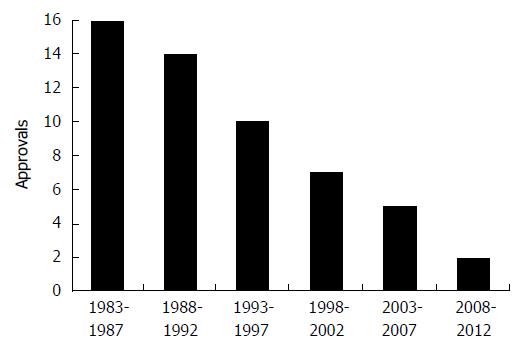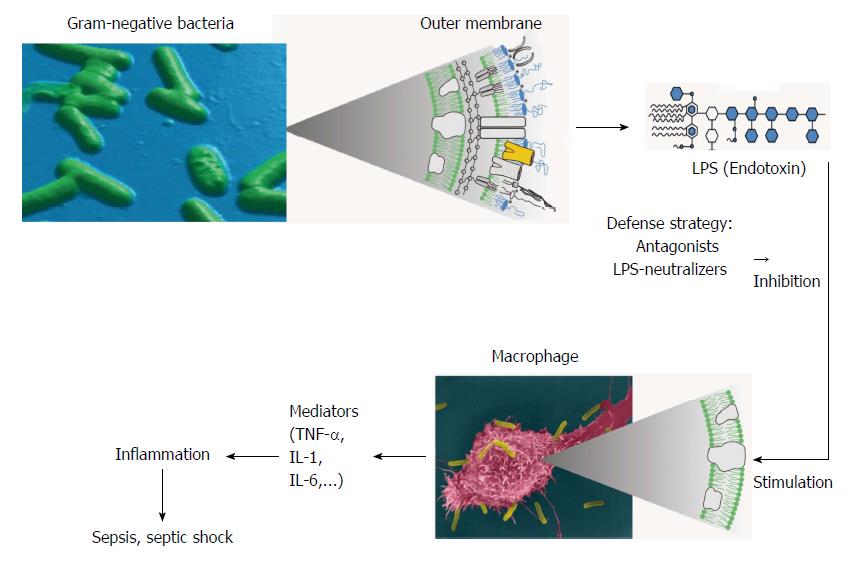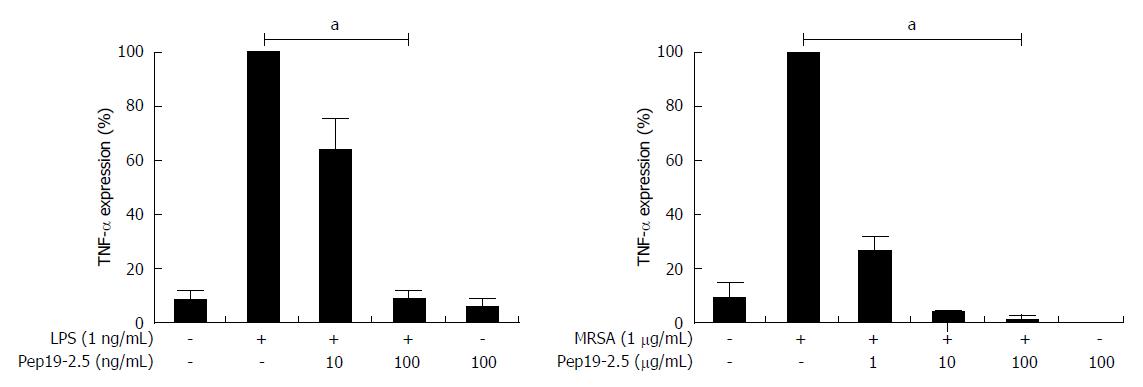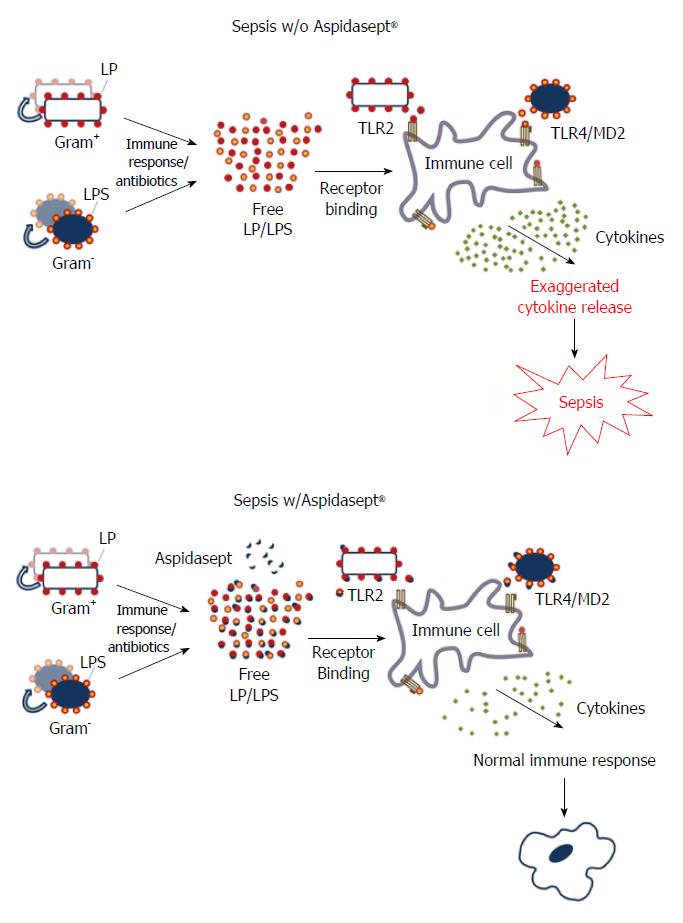Copyright
©The Author(s) 2015.
World J Biol Chem. Aug 26, 2015; 6(3): 71-77
Published online Aug 26, 2015. doi: 10.4331/wjbc.v6.i3.71
Published online Aug 26, 2015. doi: 10.4331/wjbc.v6.i3.71
Figure 1 New systemic antibacterial agents approved by the United States Food and Drug Administration per 5-year period, through 2012.
From Boucher et al[6], with permission by Oxford Press.
Figure 2 Mechanisms of lipopolysaccharide-induced cytokine (mediator) secretion with subsequent induction of inflammation and sepsis.
Without therapeutical intervention, the interaction of the toxins leads to cell activation with subsequent release of inflammation-inducing compounds eventually resulting in sepsis. Intervention strategies may be performed by e.g., AMP and LPS/LP-neutralizers. LPS: Lipopolysaccharide; IL: Interleukin; TNF: Tumor necrosis factor.
Figure 3 Determination of tumor necrosis factor-α expression levels from human lung tissue with lipopolysaccharide from Salmonella minnesota R60 and heat-killed MRSA combined with different concentrations of Pep19-2.
5 (Aspidasept®). Depicted is the mean ± SEM of 5 independent experiments. Assuming parametric distribution data were log-transformed and groups were compared for statistical significant differences by use of One-Way Repeated Measure ANOVA (aP < 0.05). From[19] with permission of American Society for Microbiology. LPS: Lipopolysaccharide; TNF: Tumor necrosis factor.
Figure 4 Compound Aspidasept® (Amino acid sequence GCKKYRRFRWKFKGKFWFWG; EU, United States, and Japan patent filed) is able to inhibit very efficiently the cytokine production induced by the pathogenicity factors endotoxin/lipoproteins or by the bacteria in vitro, in vivo (various mouse models), and ex vivo (human lung, see Figure 3).
These inhibition properties of Aspidasept® comprise various relevant bacterial strains from Gram-negative and Gram-positive origin, as well as Mycobacteria, in particular M. tuberculosis. Aspidasept® has low toxicity (the NOAEL, no observed adverse effect level’ is 200 to 500 times higher than the planned therapeutical doses). Beside its inflammation-inhibiting activity, it is able to bind the multi-resistant bacteria thus limiting their spreading. LPS: Lipopolysaccharide.
- Citation: Brandenburg K, Schürholz T. Lack of new antiinfective agents: Passing into the pre-antibiotic age? World J Biol Chem 2015; 6(3): 71-77
- URL: https://www.wjgnet.com/1949-8454/full/v6/i3/71.htm
- DOI: https://dx.doi.org/10.4331/wjbc.v6.i3.71












